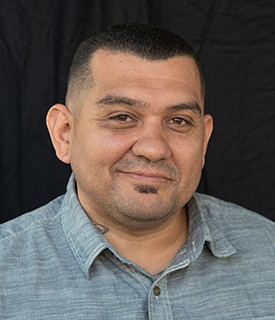Psychotherapy is a popular and highly recommended treatment for various mental health disorders. Two of these recommended treatments include cognitive-behavioral therapy (CBT) and dialectical behavior therapy (DBT). Both therapies are commonly used to treat post-traumatic stress disorder (PTSD), as they are very similar. However, there are key differences between the two that may or may not make them both applicable to an individual experiencing trauma symptoms.
What Is CBT?
Also commonly referred to as “talk therapy,” CBT involves discussing your problems with a trained, licensed therapist to help reframe your thoughts and mindset. People who have PTSD may feel like they are stuck in a permanent negative cycle. They may have a mental loop of negative self-talk that says, “nothing will ever get better.” A therapist can use CBT techniques rooted in logic and reason to turn those thoughts around, so the negatives no longer control you.
What Are the Techniques Used in CBT?
There are a number of techniques used in CBT sessions. A therapist may use some or all of them in a session, depending on the type of help you need. A few of these techniques include:
- Identifying negative thoughts: Identifying your thoughts and feelings in certain situations can help you and your therapist understand how they contribute to specific behaviors.
- Learning and practicing new skills: When you detect a negative thought pattern forming, CBT can help you learn a healthy coping mechanism to apply in real-life scenarios.
- Goal setting: One of the most important steps in trauma recovery, your therapist will help you develop both short-term and long-term goals for your treatment. The process of getting there is just as important as the outcome.
- Problem-solving: Trauma symptoms often have a specific cause, for example, fear of driving after surviving a tragic accident. CBT can help you identify and solve those problems that result from trauma and reduce the negative impact on your life.
- Self-monitoring: You will be encouraged to track your progress outside of therapy sessions, such as by journaling your thoughts, feelings, and reactions to certain situations throughout the week.
What Is DBT?
DBT is a form of CBT. This therapy focuses on helping people with trauma learn to better interact with their surroundings in less emotional ways. DBT was initially developed to treat borderline personality disorder but has since been adapted to treat other mental health disorders as well. Based on mindfulness techniques to help re-train your mind when facing emotional challenges, DBT is useful for stopping harmful behaviors, dealing with suicidal ideations, and managing cravings.
What Are the Techniques Used in DBT?
There are a number of techniques used in DBT sessions, including:
- Mindfulness techniques: “Mindfulness” refers to the ability to pay attention to what is happening in the present moment rather than reliving the past. It’s a skill that takes lots of practice but allows those struggling with trauma to interpret the events around them in a positive way.
- Learning to tolerate stress: We can’t always change our circumstances, but we can change how we respond to them. DBT can help you take positive steps forward based on what is within your control.
- Regulate emotions: People suffering from trauma can feel negative emotions in an intense, disruptive way. DBT can help you identify these feelings and reduce the vulnerable mental and behavioral response to them so they don’t overpower and control you.
- Group therapy: This form of therapy may benefit some clients and not others. Depending on your individual needs, you may find it helpful to process your feelings with other people who are experiencing the same things.
What Are the Differences Between CBT and DBT?
While CBT and DBT are both used to help people address and reframe negative thoughts and behavioral patterns, CBT focuses more on thought patterns than DBT. CBT helps to identify cognitive distortions of reality and how we filter information. DBT places greater emphasis on the relationship between acceptance and change. CBT takes place primarily in one-on-one sessions with a therapist, while DBT involves group therapy to help people practice some of the skills they are learning.
What Should Clients Know About CBT and DBT?
Both therapeutic techniques are helpful, but you should know that going into either type of therapy requires a lot of work. Your therapist will likely assign some out-of-office “homework,” such as journaling, to help track your progress. It’s also essential to come to sessions prepared to talk about issues that may be emotionally difficult. While your therapist will work with you at your own pace and not pressure you to move faster than you’re comfortable with, you will be encouraged to share your thoughts, feelings, and other reactions to the event that caused your trauma. As you share these complex thoughts, you may be encouraged to look at them from a different perspective.
Which Technique Is Better for Trauma Treatment?
As someone looking for relief from trauma symptoms, it’s natural to want to know which therapy method is better for your recovery process. CBT and DBT together can be useful in treating multiple mental and behavioral issues by identifying and changing negative thoughts and actions. While CBT is the more popular of the two, a discussion with your therapist can help you make an educated decision.
Dealing with trauma can be challenging. At Crownview Co-Occurring Institute, our licensed, compassionate therapists, can help you learn skills to combat your heavy thoughts, emotions, and negative behavior patterns. You can also learn how to set goals for yourself to start looking forward to the future rather than perpetually living in the past. While it may seem difficult, talking about your trauma is a significant step toward the goal of healing. Your therapist can help you determine whether cognitive-behavioral therapy, dialectical behavior therapy, or both are appropriate for your unique situation and needs. At Crownview Co-Occurring Institute, we can set you up with the right therapist who is uniquely skilled to help you in your situation. We have helped many people change the course of their lives and live healthier. You too can be one of them. To learn more, call us today at (760) 477-4754.

 Kimberly Gilkey, RADT-1
Kimberly Gilkey, RADT-1 Timothy Wieland
Timothy Wieland David Abram
David Abram Mark Melden, DO/DABPN
Mark Melden, DO/DABPN Jeffrey Klein
Jeffrey Klein Nathan Kuemmerle, MD
Nathan Kuemmerle, MD Laura Hopper, Ph.D.
Laura Hopper, Ph.D. Rebecca McKnight, PsyD
Rebecca McKnight, PsyD Milena Dun, PhD
Milena Dun, PhD Brieana Turner, MA, LMFT
Brieana Turner, MA, LMFT Brittany Perkins, MA, LMFT
Brittany Perkins, MA, LMFT Joanne Talbot-Miller, M.A., LMFT
Joanne Talbot-Miller, M.A., LMFT Alexis Weintraub, PsyD
Alexis Weintraub, PsyD Kathleen McCarrick, MSW, LSW
Kathleen McCarrick, MSW, LSW Christina Lam, N.P.
Christina Lam, N.P. John P. Flores, SUDCC-IV-CS, CADC II
John P. Flores, SUDCC-IV-CS, CADC II David Dalton, Facility Operations Director
David Dalton, Facility Operations Director Amy Thompson
Amy Thompson Kelly Schwarzer
Kelly Schwarzer Jovanna Wiggins
Jovanna Wiggins Alexandria Avalos, MSW, ACSW
Alexandria Avalos, MSW, ACSW Michelle Ertel
Michelle Ertel Emily Skillings
Emily Skillings Amanda Irrgang, Registered Dietitian Nutritionist (RDN)
Amanda Irrgang, Registered Dietitian Nutritionist (RDN) Gianna Melendez
Gianna Melendez Jodie Dahl, CpHT
Jodie Dahl, CpHT Jordan Granata, PsyD
Jordan Granata, PsyD